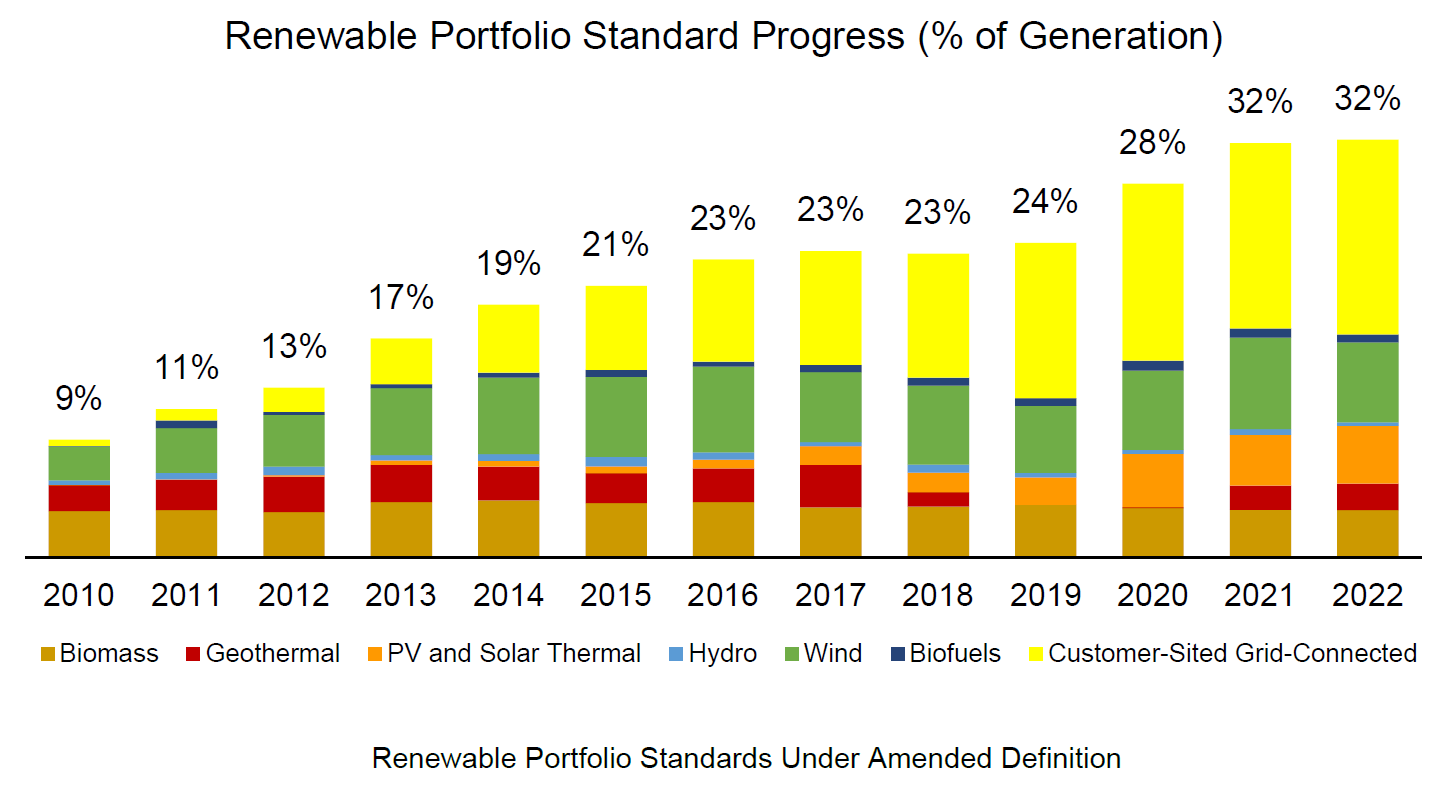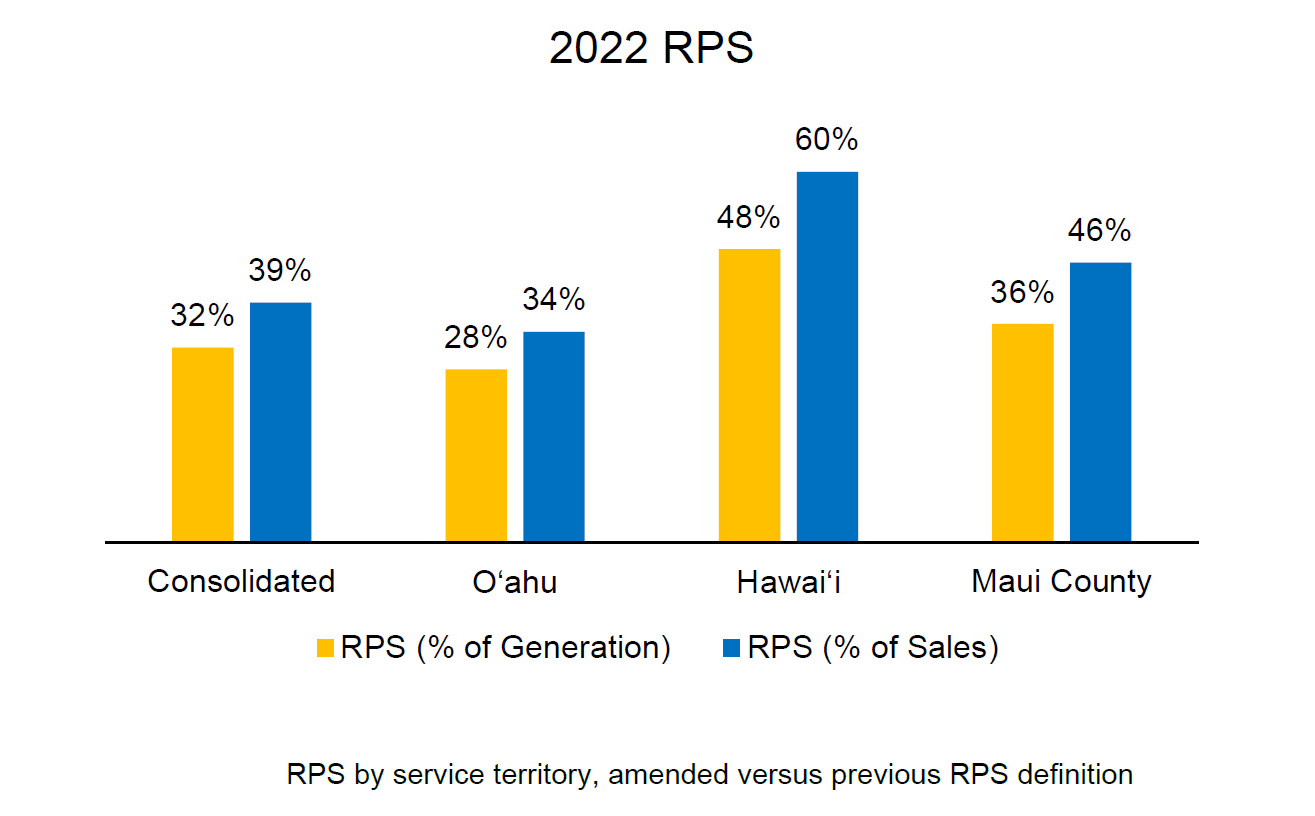Hawaiian Electric achieves 32% renewable energy in 2022
Percentage reflects new calculation for renewable portfolio standard
Release Date: 2/17/2023
HONOLULU, Feb. 17, 2023 – Aided by new grid-scale and rooftop solar capacity, Hawaiian Electric achieved a 32% consolidated renewable portfolio standard (RPS) in 2022 using a new calculation signed into law last year.
The 32% is the consolidated RPS for Oahu, Hawaii Island and Maui County and represents the percentage of electricity generated by renewable resources. Using this new calculation, the 32% represents no change in RPS from 2021.
The RPS calculation previously reflected the renewable percentage of electricity sold. Under the old formula, the RPS for 2022 would have been 39%, up from 38% in 2021.
The RPS definition was changed under Act 240, which was signed into state law in July 2022. The revised definition showing the percentage of total generation from renewables is a more accurate way to measure progress toward the goal of achieving 100% renewable energy by 2045. It changes the way private rooftop solar is counted in the calculation, lowering the percentage and ensuring rooftop solar production isn’t double counted.
“We’re still on track to meet the next RPS milestone of 40% by 2030, even with the new method of calculation,” said Jim Kelly, a Hawaiian Electric spokesperson. “With the help of our customers, who now have nearly 100,000 rooftop systems online, and large utility-scale projects on the grid, we’re making tremendous progress, more than tripling the amount of renewables on our system since 2010.”
The 32% was achieved through a mix of solar, geothermal, biomass, hydro, wind and biofuels. (See chart on page 2.) Although there was an increase in energy from renewables, those gains were offset by higher overall electricity demand and generation.
The Oahu, Hawaii Island, and Maui County systems achieved 28%, 48%, and 36% RPS, respectively. (See chart on page 2.)
Other 2022 RPS highlights:
- Grid-scale solar generation increased by 15% due to the addition of Mililani 1 Solar, which generates 39 megawatts and includes a 156 megawatt-hour battery, and came online in July. Waiawa Solar Power (36 MW/144 MWh) also contributed during the last quarter of 2022 while undergoing testing and commissioning.
- 40 MW was generated by new customer-sited energy resources, including rooftop solar.
- Wind production was down by 11% compared to 2021.








